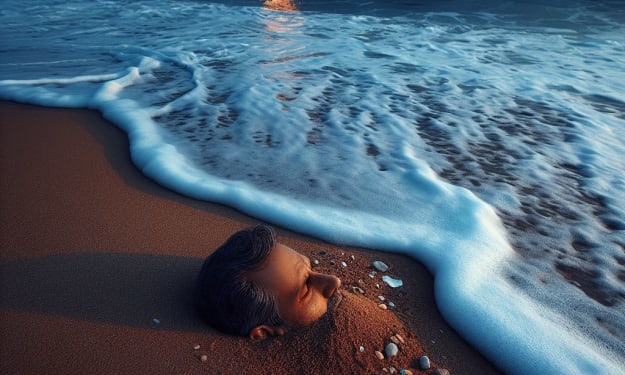Bronze Statues: An Overview
You've seen Rome's and Greece's artistic treasures. These works have had a significant impact on sculpture as we know it.

You've seen Rome's and Greece's artistic treasures. These works have had a significant impact on sculpture as we know it.
Renaissance statue creation from the late 13th and early 14th centuries are probably the most common images that come to mind when you think of sculptures or statues. Thinkers and artists saw themselves as reawakening to the achievements of classical Roman culture during this time period.
The Renaissance sculptors were among the most refined and detailed the world had ever seen.
Sculpture, on the other hand, predates the Renaissance and was popular in ancient Greece and Rome.
Statues in Bronze
A bronze sculpture, also known as a "bronze," is a three-dimensional work of art created by pouring molten bronze into a mold and then allowing it to solidify. Bronze, unlike marble, is much more malleable and durable than stone.
Bronze is a copper-tin alloy formed by simultaneously heating and cooling the two metals. Metal can only be called bronze if it contains 88 percent copper and 12 percent tin in today's world.
Even so, the composition of bronze used in artistic practices today varies greatly. Many ancient 'bronzes' were later discovered to be brass, an alloy of copper and zinc.
The process of molding and constructing these massive projects necessitates meticulous measurement. Many hours of work went into creating the smooth, heavy, and detailed object.
Bronze statues are created through a process known as wax casting. The artist will first carve their statue or image into soft wax, which will then be used to create a mold. This mold is typically constructed of a composite material or concrete. Following the construction of this mold, hot metal is added.
After cooling, the mold material is removed, revealing the shiny, smooth molded surface. After that, the statue is polished and cleaned to remove any remaining residue or composite material.
To create a flawless bronze statue, an artist must be a true master of several techniques.
Bronze Statues Today
Bronze statues are still popular today for memorializing loved ones, pets, or experiences, as well as beautifying homes, parks, and public spaces. Bronze statues, whether indoors or outdoors, add a touch of classic elegance to any setting.
While humans of personal, historical, or cultural significance are some of the most popular subjects for bronze sculpture, bronze statues also frequently depict wildlife, fantastical creatures, and literary figures.
Custom Bronze Statues
A bronze statue commission will serve as a keepsake for decades to come, whether you want to honor a beloved family member, animal, or experience, or simply want to decorate with classic beauty.
We work with several bronze foundries directly and will collaborate with you to create a one-of-a-kind piece as unique as your life and experiences.
Our bronze statues are all cast using the time-honored "Lost Wax Process." This results in a higher quality bronze statue with incredible detail.
5 Reasons Why the World of Bronze Sculpture is Amazing
Bronze statue art craftsmanship is impressive! This versatile metal is used by artists to create sculptures with realistic textures, shapes, and details. Throughout history, especially during the Bronze Age, bronze was formed into countless items. A fascinating example is the creation of bronze sculpture. It is still practiced today and is becoming increasingly popular in the latest interior home design trends. Here are 5 fascinating facts about this amazing trend:
The Oldest Sculpture in the World is Bronze
Southerly Wind is a bronze horse sculpture by Cathy Kuzma. Bronze was the first alloy ever invented! It is a metal that is composed of 80 - 90% copper and 10 - 20% tin. It is the most commonly used sculptural material because it expands when hot and contracts when cool, making it easier to transfer impressions from the mold. The earliest bronze sculpture is thought to be "Dancing Girl from Mohenjodaro," which was created around 2500 B.C. Since ancient times, bronze has been used to create weapons, statues, monuments, tools, mechanical parts, and a variety of other items.
All Bronze Sculptures are Clay Sculptures First
The journey of a bronze sculpture begins when the artist creates the first sculpture out of clay. That a bronze sculptor is also a potter is incredible! During this stage, the artist concentrates on creating intricate details that will be picked up in the bronze casting. Once the first mold is made over top of it, the artist is committed. To use the cured mold, the clay sculpture inside must be shattered.
Making Bronze Sculpture Requires Many Steps
It is incredible to be able to refine and cast molten bronze into the desired image. Many steps must be taken to ensure that the final mold can withstand the extreme temperature of the liquid bronze as it sets. This is made possible by the "lost wax" method. Over the clay sculpture, a wax mold is created, followed by a ceramic mold that is kiln baked. When the wax has melted away or "lost," the mold is ready for the bronze. It's no surprise that bronze sculpting is both a science and an art.
Bronze Sculptures Come in Different Colors
Bronze is well-known for its classic golden brown sheen, but did you know it also comes in other colors? The copper in bronze sculpture reacts with the oxygen in the air to form a protective outer layer known as a patina. Patina in nature is light green, similar to the Statue of Liberty. Bronze artists create different colors by applying their own man-made patinas to sculptures, such as blue, red, and dark green. Brown is the most popular color.
Not All Bronze Sculptures are Cast in One Piece
For more complex pieces, artists create molds and cast individual sculpture parts. The finished bronze pieces are then welded together to form a single sculpture. If the sculptor is lucky, the welded spots will be nearly impossible to see with the naked eye. It demonstrates the sculptor's skill and accomplishment.
About the Creator
Amit Kumar
Full-time thinker & part-time writer...






Comments
There are no comments for this story
Be the first to respond and start the conversation.